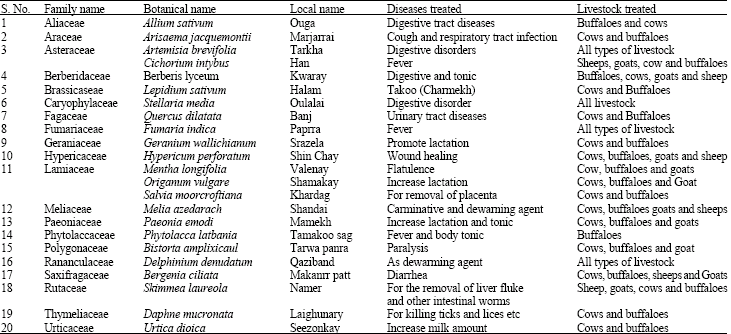Research Article
Ethnomedicinal Plant Resources of Shawar Valley
Department of Botany, Hazara University Mansehra, Pakistan
Habib Ahmad
Department of Botany, Hazara University Mansehra, Pakistan
M. Ramzan
Department of Botany, Hazara University Mansehra, Pakistan
Mian Mohib Jan
Department of Botany, Government Post Graduate Jahanzeb College Saidu Sharif Swat, Pakistan










